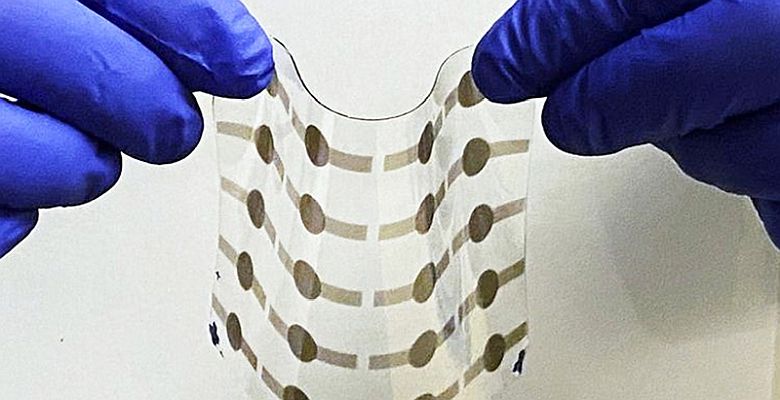The development of a durable material for flexible artificial muscles also paves the way for robots and wearable devices that mimic natural movement.
California researchers have developed a new material and manufacturing process for creating artificial muscles that are stronger and more flexible than their biological counterparts. Creating an artificial muscle to enable labour and detect force and touch has been one of the great challenges of science and engineering. The researchers are affiliated with the University of California Los Angeles and the non-profit scientific research institute SRI International in Menlo Park (near San Francisco).
Di-electric elastomers
For a soft material to be considered for use as artificial muscle, it must be able to release mechanical energy and remain viable under harsh conditions. It must not easily lose its shape and strength after repeated work cycles. Many materials were considered as contenders for the creation of artificial muscle. But dielectric elastomers (lightweight materials with high elastic energy density) offer optimal flexibility and toughness.
These are electro-active polymers, natural or synthetic substances that can change in size or shape when stimulated by an electric field. They can be used as actuators, allowing machines to operate by converting electrical energy into mechanical work. Most dielectric elastomers are made of acrylic or silicone, but both materials have disadvantages. Although traditional acrylic can achieve high activation loads, it must be stretched beforehand and lacks flexibility. Silicones are easier to make, but cannot withstand high loads.
PHDE
Using commercially available chemicals and a curing process with ultraviolet light, the research team created an improved acrylic-based material. This is more pliable, easier to tune and easier to scale without losing its strength and endurance. The acrylic acid allows more hydrogen bonds to be formed, making the material more flexible. The researchers also modified the cross-linking between polymer chains, making the elastomers softer and more flexible.
The resulting thin, processable, high-quality dielectric elastomer film (PHDE) is then placed between two electrodes to convert electrical energy into motion as an actuator. Each PHDE film is as thin and light as a piece of human hair, approximately 35 µm thick. When several layers are stacked on top of each other, they become a miniature electric motor that can act like muscle tissue. This can produce enough energy for movement of small robots or sensors. The researchers have made stacks of PHDE films ranging from four to fifty layers.
Artificial muscles
Artificial muscles equipped with PHDE actuators can generate more MPa of force than biological muscles. They also have three to ten times more flexibility than natural muscles. Multi-layer soft films are usually manufactured using a 'wet' process in which liquid resin is deposited and cured. But this process can result in uneven layers, which makes for a poorly performing actuator. For this reason, many actuators have so far only been successful with single-layer DE films. The research in California involves a 'dry' process in which the films are applied in layers with a knife. It is then cured under ultraviolet light, making the layers uniform. This increases the energy output of the actuator, allowing it to support more complex movements.
The simplified process and the flexible and durable nature of the PHDE allow for the manufacture of new soft actuators. These can bend to jump, like spider legs, or wind and spin. The researchers also demonstrated the PHDE actuator's ability to throw a pea-sized ball that is 20 times heavier than the PHDE films. The actuator can also expand and contract like a diaphragm when a voltage is turned on and off, giving a glimpse of how artificial muscles may be used in the future.
The advances could lead to soft robots with improved mobility and endurance, and new wearable and haptic technologies with tactile sensation. The fabrication process can also be applied to other soft thin film materials for applications such as microfluidic technologies, tissue engineering or microfabrication.
Photo: UCLA, Qibing Pei

